Data dive: Yogi Ferrell’s heavy offensive workload
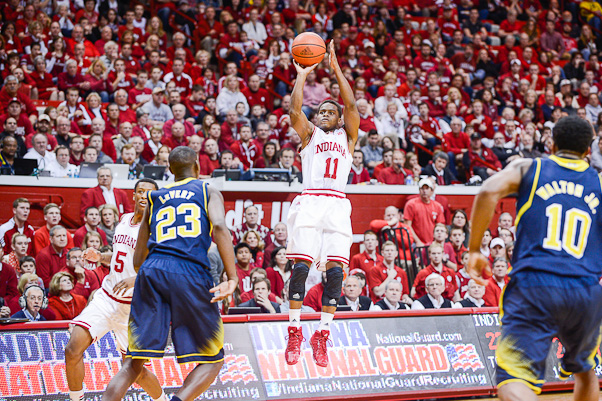
Note: Only stats for games where the opponent is currently in the RPI top 150 are included in this post.
There is no doubt that Indiana’s season thus far has been chaotic and unpredictable, marred by some bad losses but boosted by some great wins. And while predicting how the team will perform on a given night might seem a bit like flipping a coin, there has been one unwavering presence: Yogi Ferrell.
The absolutely tremendous year Yogi is having has been somewhat lost in the fray of a tumultuous season. IU hasn’t had a scorer like Yogi since Eric Gordon was in Bloomington for his only season as a Hoosier. Still, Gordon was a shooting guard who had other teammates directing the offense and looking to open things up for him, while Yogi is not only the leading scorer but also the team’s primary facilitator.
There is an inherent paradox that arises when a team’s leading assist man is also its leading scorer: When to score and when to assist?
It has been clear for some time that Yogi has to score for this Hoosier squad to be competitive, simply because there aren’t many others that are ready to shoulder a significant scoring load. Some of the other backcourt candidates — Troy Williams, Evan Gordon and Stan Robinson — have all been too inconsistent to be heavily relied on. Even so, many debates have raged this season about whether Yogi is doing too much shooting and not enough facilitating.
First, it is interesting to put some context around Yogi’s season in terms of offensive responsibilities. No team in the Big Ten requires more from a single player than Indiana requires of Yogi Ferrell and the numbers are there to back it up.
Using play-by-play data, assists and points can be combined to form a metric that measures how many points a player is responsible for. This metric is defined as [(points) + (assist points)/2] (e.g. a player scores 10 points and assists his teammates on six points, to give 13 points total). This measure is used below to determine what percentage of the team’s points a player is responsible for:
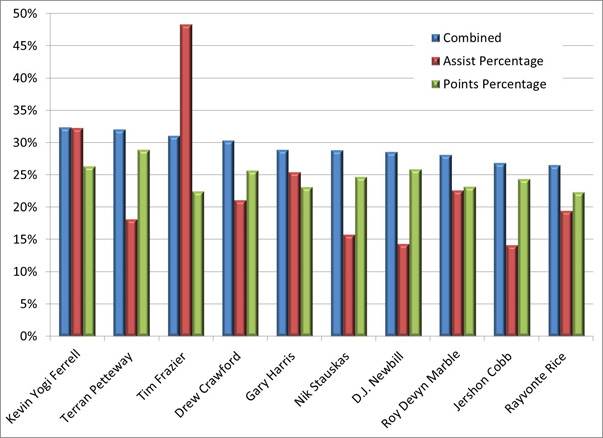
It is no surprise that Yogi is first in the conference in terms of combined scoring/assist responsibilities. Yogi is also fifth in assist percentage of team’s total and second in points percentage of team’s total. This chart also reveals the perils of relying so heavily on a single player as the only players over 30 percent play on teams that struggle offensively.
What’s even more impressive about Yogi’s scoring is that most of his made field goals are unassisted. It holds true that the higher percentage of unassisted baskets a player makes, the worse his field goal percentage is. The chart below shows this trend for some of the league’s top scorers:
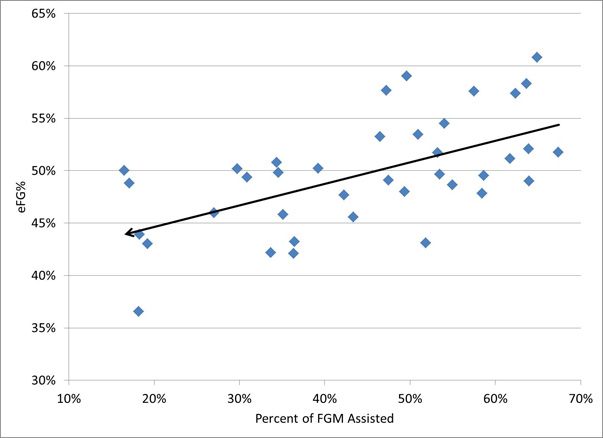
Of the ten players in the Big Ten that have the highest percentage of unassisted shots, Yogi Ferrell is second in effective field goal percentage. The percent of made field goals assisted is shown in parentheses:
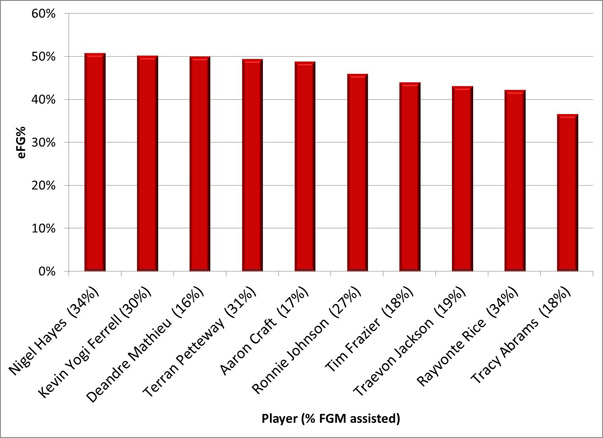
Essentially, this reveals just how good Yogi has been at creating his own shots while still getting quality looks at the basket.
It is evident that Yogi shoulders an enormous load on the offensive end for the Hoosiers this year, but many have criticized how that load is distributed between points and assists. Several college basketball analysts this year have said that “as Yogi goes, so go the Hoosiers,” but the data is not conclusive (though Alex did show that Yogi’s two point percentage is significantly lower in Indiana’s losses). In other words, Yogi consistently delivers on offense, but what makes the difference between a win and a loss for Indiana is typically whether the rest of the team can supply enough additional offense.
Looking at various statistics in the team’s wins versus its losses this season, Yogi’s performance is very steady. There is no significant difference in Yogi’s shot quantity, overall shooting percentage, scoring, or percentage of the team’s total points between wins and losses. This evidence doesn’t support the theory that Indiana’s offense plays better when Yogi is shooting or scoring less. The only measurable difference in terms of Yogi’s performance is that his assists per 40 minutes are higher in Indiana’s wins than in its losses.
In Indiana’s wins versus RPI top 150 teams this year, Yogi is averaging 4.6 assists per 40 minutes, but only 3.4 in the Hoosiers’ losses. It is important to be careful before drawing any conclusions here, because there is always more to the story. The important question to be answered is if Indiana is playing better because Yogi is assisting more, or if Yogi is assisting more because Indiana is playing better.
For example, if Yogi consistently sets his teammates up with great passes, but they simply miss their shots, he will still have poor assist numbers. It turns out that Yogi’s assist numbers are closely correlated with the rest of team’s shooting percentage.
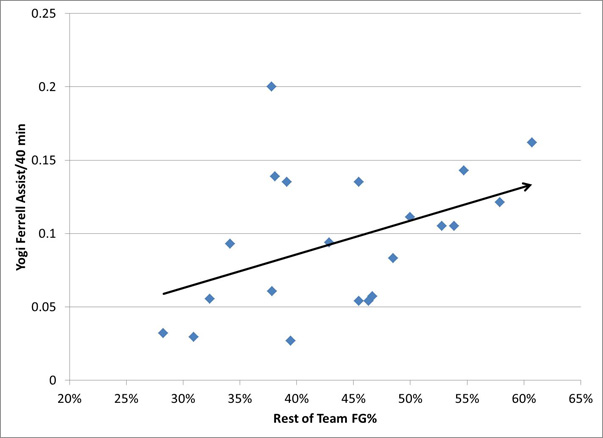
This seems to imply that Yogi is getting more assists simply because his teammates are making a higher percentage of their shots. As a result, the Hoosiers tend to win the games where Yogi’s assist numbers are higher.
Having seen the numbers, there is no overwhelming evidence that Yogi needs to adjust his scoring/assist balance for the benefit of the offense. It is always important to take only what the defense is giving and adjust the game plan accordingly, but when this Indiana squad needs a bucket Yogi will always be option number one.
There is truly no simple answer to the score versus assist dilemma for Yogi Ferrell, because so much depends on the defensive game plan of the opponent. As the team’s floor general and primary offensive threat, Yogi faces a challenge unlike that of any other Big Ten player. Indiana needs Ferrell to score, to pass, and to lead, but ultimately the team really needs the other players to step up.
Two very good wins against Iowa and Ohio State have come with impressive performances from Indiana’s supporting cast, especially in the absence of Noah Vonleh for the Ohio State game. Though a tournament berth is out of reach barring a run through the Big Ten tournament, if the rest of the team continues to supplement Ferrell’s consistency with some of their own, the team has the chance to pick up some good wins to close out the year. Regardless, in this chaotic season it is important not to overlook what a player Yogi Ferrell has become.
Filed to: Yogi Ferrell
